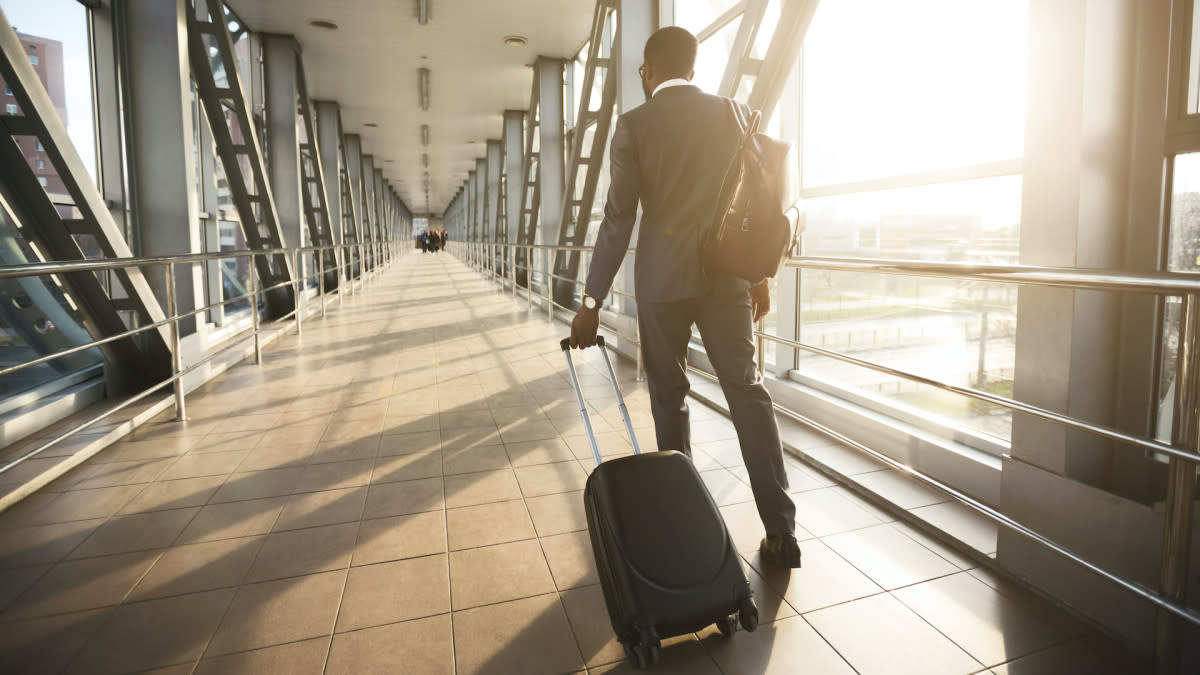TSA Unveils New Airport Security Measures: Say Goodbye to RealIDs
Navigating airport security has consistently been a intrusive experience. Under the guise of ensuring "security"—a priority shared by all—federal officers wield considerable authority.
During my latest journey from Orlando to Hartford, the experience turned out to be quite disagreeable. Once I placed my carry-on luggage into the X-ray machine, I proceeded through the full-body scan detector.
Related: Disney World introduces innovative addition enhancing its theme parks
A spot on my inner thigh started glowing, prompting the TSA agent to perform a rather forceful and personal pat-down in that region. While justifiable under the guise of “security,” it felt quite extreme.
Another surprise was that prior to stepping into the scanner, I handed over my Real ID—a passport card—to the TSA officer stationed at the desk so he could take my photograph as I stood right in front of him.
Don't overlook this: Sign up for TheStreet's free daily newsletter.
Initially, it didn’t seem significant, but looking back, I recognized that along with the stricter identification procedures, the photograph itself was actually fresh.
Some individuals are outraged about this new procedure, questioning if it invades personal privacy or aims to monitor citizen movements. However, the TSA has refuted this idea.

The TSA is now capturing your image.
The TSA has easy justification for anything it does. It can grab my groin because it's protecting the public good. It can confiscate a corkscrew it missed in my baggage dozens of times for the same reason.
Most people will put up with anything under the guise that it's keeping them safer. That's how the TSA explained the addition of the photo-taking technology when it was introduced at Lehigh Valley International Airport in Pennsylvania.
“This technology enhances detection capabilities for identifying fraudulent IDs such as driver’s licenses and passports at a checkpoint and it increases efficiency by automatically verifying a passenger’s identification,” Gerardo Spero, TSA’s federal security director for Pennsylvania and Delaware, said in the news release. “We just want to ensure that you are who you say you are.”
The new photo-taking machines are a new version of the agency's Credential Authentication Technology to verify the identity of travelers. The first generation of these units was designed to scan a traveler’s photo identification and confirm the traveler’s identity and flight details.
More on travel:
- Budget carrier to discontinue all Hawaii routes due to reduced demand
- The government has released a fresh travel warning for a well-liked seaside getaway spot.
- A different nation has recently introduced a new visa rule for tourists.
The updated CAT units, known as CAT-2, possess identical features but come with an additional camera that takes a live photograph of the passenger.
"CAT-2 compares the traveler’s photo on the ID against the in-person, real-time photo. Once the CAT-2 confirms the match, a TSA officer verifies, and the traveler can proceed through the checkpoint, without ever exchanging a boarding pass. The photo is then deleted," according to the federal agency.
You have the option to decline certain aspects of airport security.
When it comes to screening procedures, air passengers have several choices available to them. For instance, individuals who prefer not to (or cannot) undergo the body-scanning machines may choose a comprehensive physical pat-down instead.
For individuals with specific joint implants or cardiac issues, this might be a more convenient option.
"Verifying credentials is crucial for confirming passenger identities. This enhances a TSA agent's capability to authenticate a traveler’s photographic ID and detect discrepancies linked to fake travel papers," explained Spero.
The system additionally verifies the passenger's flight status by confirming they have a valid ticket for departure from an airport on that very day.
Connected: Struggling airline declares bankruptcy, passengers might not receive reimbursements
People using flyers, who may be skeptical of the federal government, do not need to get their photograph taken.
As stated by the TSA, "Photographs taken by CAT-2 units are neither kept nor utilized for purposes beyond immediate identification confirmation." Additionally, they mention, "Passengers who prefer not to engage with the facial recognition system may choose an alternate method for verifying their identities instead."
This technology isn't confined to airports; it has also found applications in more modern cruise terminals.
Belum ada Komentar untuk "TSA Unveils New Airport Security Measures: Say Goodbye to RealIDs"
Posting Komentar